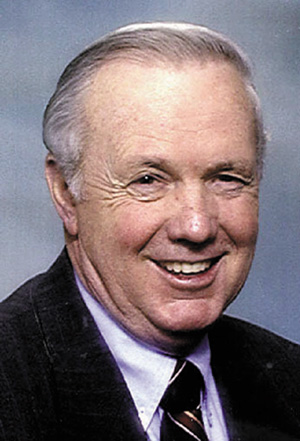No. 673 - A HISTORY MAKING SEA BEE
No. 673
Jim Davidson -- NEWSPAPER COLUMN
A HISTORY MAKING SEA BEE
One of the strongest bonds we can ever have with another human being is an emotional bond. This not only applies to human beings, but other living creatures and even inanimate objects, where we develop a strong personal attachment. While enthusiasm is the most contagious of all emotions, love is the strongest, and I want to tell you a true story today about some American Seabees in World War II that may touch your heart strings, as it did mine. It case you are not familiar with the Seabees, they were the Naval Military Construction Force, organized to build advance bases in war zones. Their motto was “We Build, We Fight.”
A few weeks ago I got a letter from Dan Urish, a former Seabee commander and University of Rhode Island professor, who begins by saying, “My sister, Ruth DeSutter of Pekin, Illinois, sent me your very interesting article about Angelita Rossi at Anzio in WW2, since it reminded her of another story that I had told her several years ago.” With his letter, Dan Urish included several articles that tell the story about a baby named Sea Bee and how she got her name. Less than a month after D-Day in France, while the Normandy invasion was still under way, the Seabees were staked out near the French town of Sainte-Marie-du-Mont waiting for the U.S. Army to push the Germans out of some nearby positions in a small village.
Amidst the gunfire and mortar shelling a U.S. Army military policeman breathlessly ran up to the battalion medical officer, stuttering some unexpected news. “In the village up ahead, sir!” he panted, “A young woman is having a baby!” It turns out this young woman had fled from the German-held village and sought refuge nearby in the home of one of her relatives. The house was in the line of fire of the German troops who were resisting the efforts of the Americans to dislodge them. The young woman was about to deliver a child and desperately needed a doctor. There were no French doctors, nurses or midwives available because they had fled the battle zone.
The battalion commander acted immediately. He assured the military policeman that the Seabees would take care of the matter, and then ordered the battalion’s executive medical officer to go forward and assist the young woman. The officer, Lt. Douglas Butman, quickly selected a medical team of Seabees, grabbed his field surgical bag, and took off for the house and delivered a new baby girl, as if all in a day’s work. The local citizenry was grateful for the many services rendered by the Seabees and, when they learned the battalion was building a new field dispensary, the women of the community volunteered to make some Red Cross field flags and spent several days in cutting and sewing for the Seabees.
Finally, it came time to christen the baby and several of the Seabees attended the ceremony. The mother asked Commander Anderson if the baby could bear a part of his wife’s name. He suggested the initials of his wife’s maiden name, “C.B.” as this would serve a two-fold purpose, to honor his wife and also honor the battalion as “Sea Bee.” Thus on July 2, 1944, Sea Bee Paule Fouchard probably became the only baby in history to be named for the Seabees.
Dan says, “Several years ago I was fortunate to locate ‘baby Seabee’ who proudly carries the name her father gave her in gratitude to the Americans. Since then she and her husband have visited America and the camp site of the Seabee unit in Rhode Island that was part of her history. Her story of compassion and friendship, in the midst of war, has been a strong bond in hearts of all those who were there.”
---
(EDITOR'S NOTE: Jim Davidson is a public speaker and syndicated columnist. You may contact him at 2 Bentley Drive, Conway, AR 72034. To support literacy, buy his book: “Learning, Earning & Giving Back.”)
